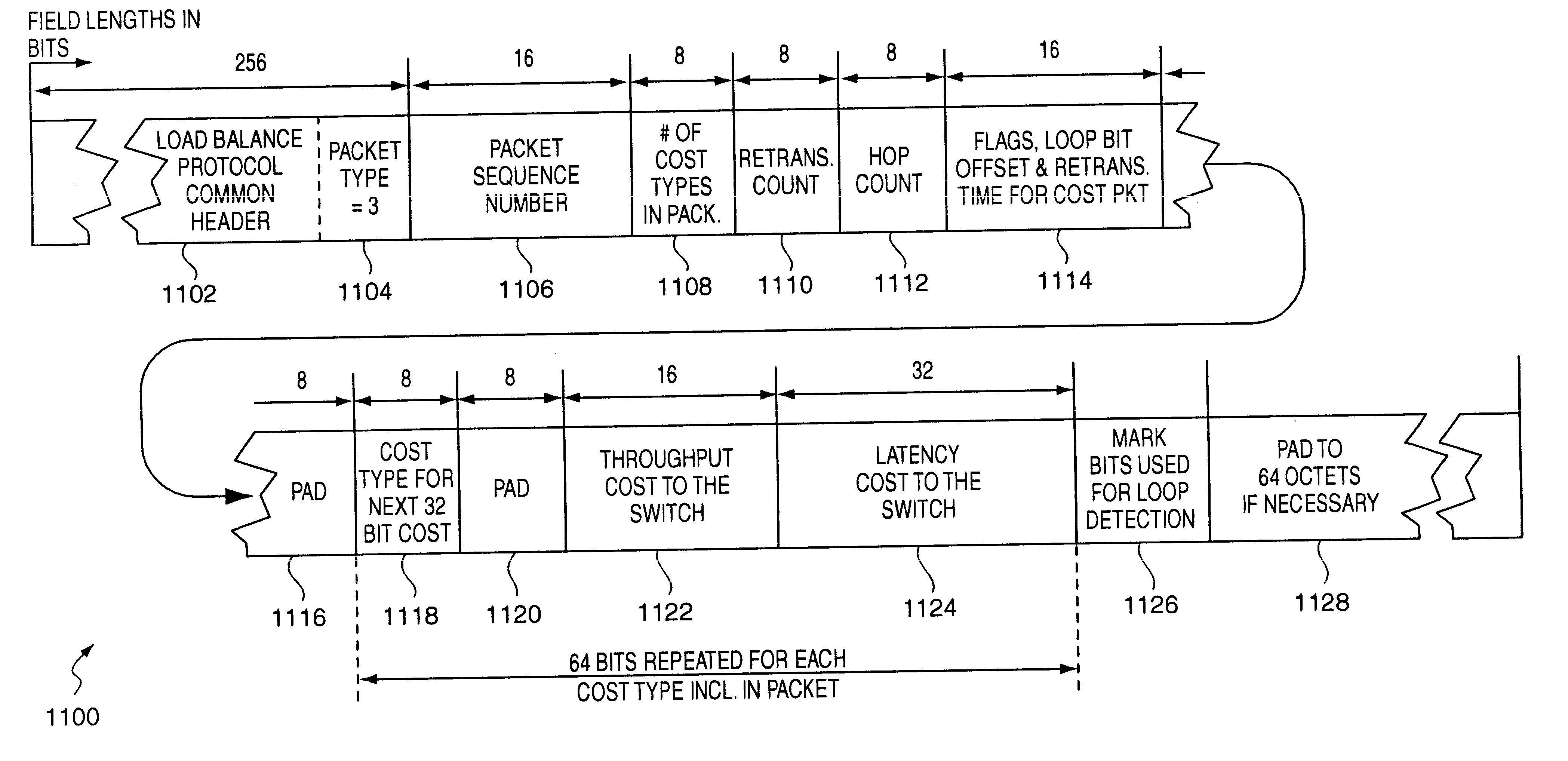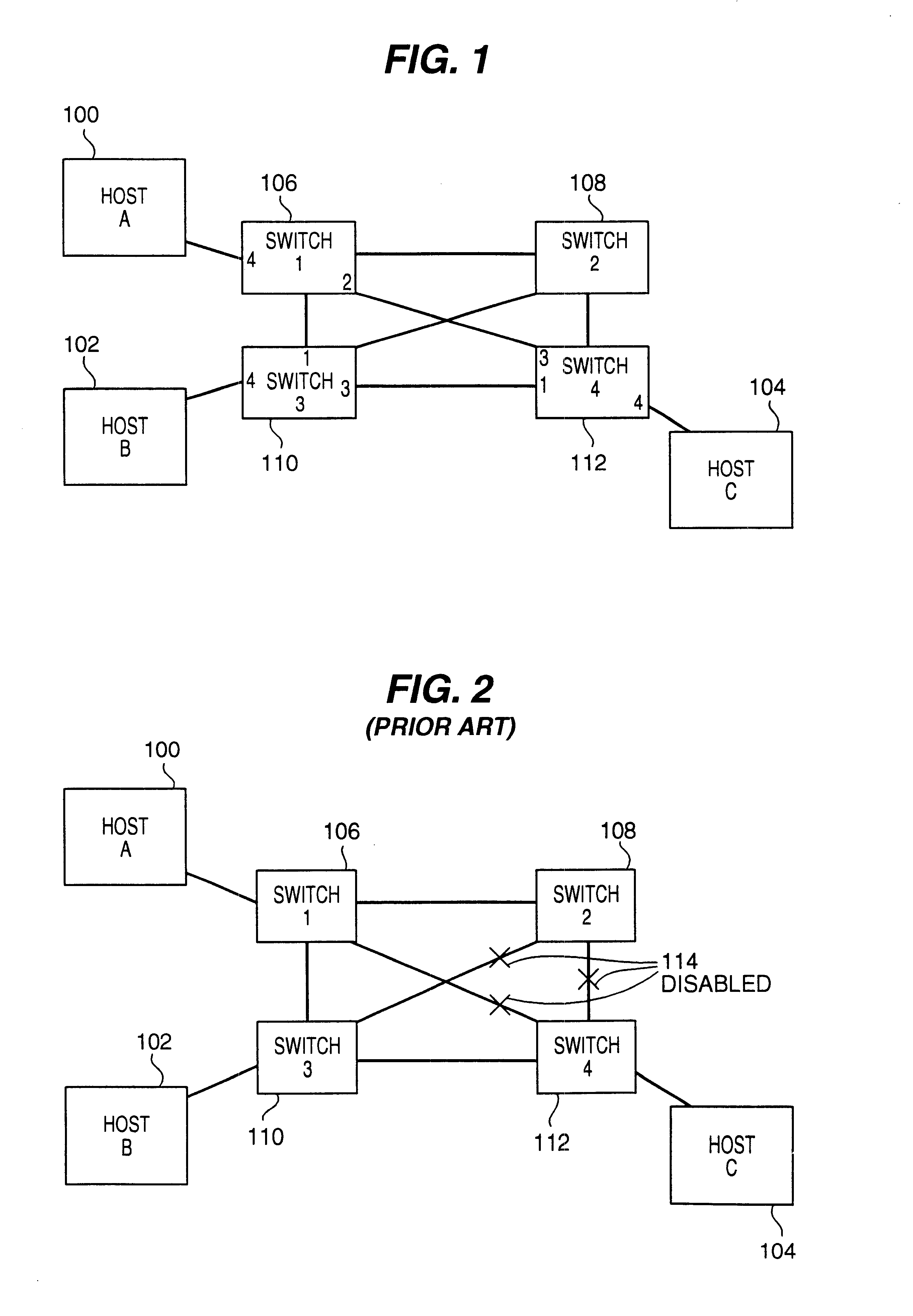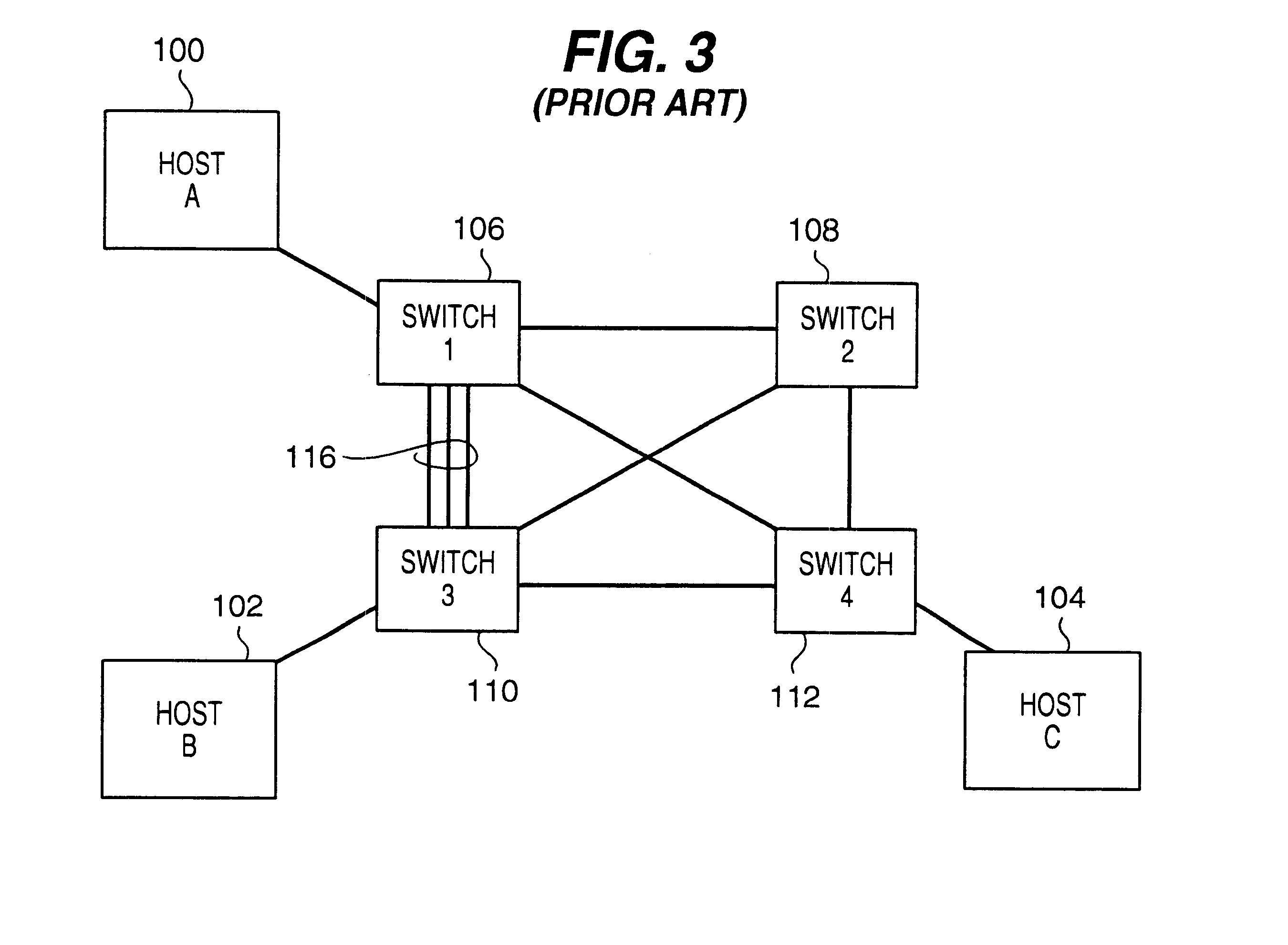Cost propagation switch protocols
a switch protocol and cost propagation technology, applied in the field of network switches, can solve the problems of complex computing networks, remains a problem to effectively utilize the full available bandwidth, and the maximum bandwidth for information exchange is limited to the maximum bandwidth of a single communication link
- Summary
- Abstract
- Description
- Claims
- Application Information
AI Technical Summary
Problems solved by technology
Method used
Image
Examples
Embodiment Construction
While the invention is susceptible to various modifications and alternative forms, a specific embodiment thereof has been shown by way of example in the drawings and will herein be described in detail. It should be understood, however, that it is not intended to limit the invention to the particular form disclosed, but on the contrary, the invention is to cover all modifications, equivalents, and alternatives falling within the spirit and scope of the invention as defined by the appended claims.
1. Introduction
The invention of this application is a new switch-to-switch protocol for controlling switches operable in accordance with the protocol. The protocol enables load balancing communication traffic over multiple active switches in a network. As compared to prior techniques, such as the spanning tree protocol, the load balancing protocols of the present invention permit more efficient utilization of available bandwidth in the communication network. Such switches operable in accordan...
PUM
 Login to View More
Login to View More Abstract
Description
Claims
Application Information
 Login to View More
Login to View More - R&D
- Intellectual Property
- Life Sciences
- Materials
- Tech Scout
- Unparalleled Data Quality
- Higher Quality Content
- 60% Fewer Hallucinations
Browse by: Latest US Patents, China's latest patents, Technical Efficacy Thesaurus, Application Domain, Technology Topic, Popular Technical Reports.
© 2025 PatSnap. All rights reserved.Legal|Privacy policy|Modern Slavery Act Transparency Statement|Sitemap|About US| Contact US: help@patsnap.com



